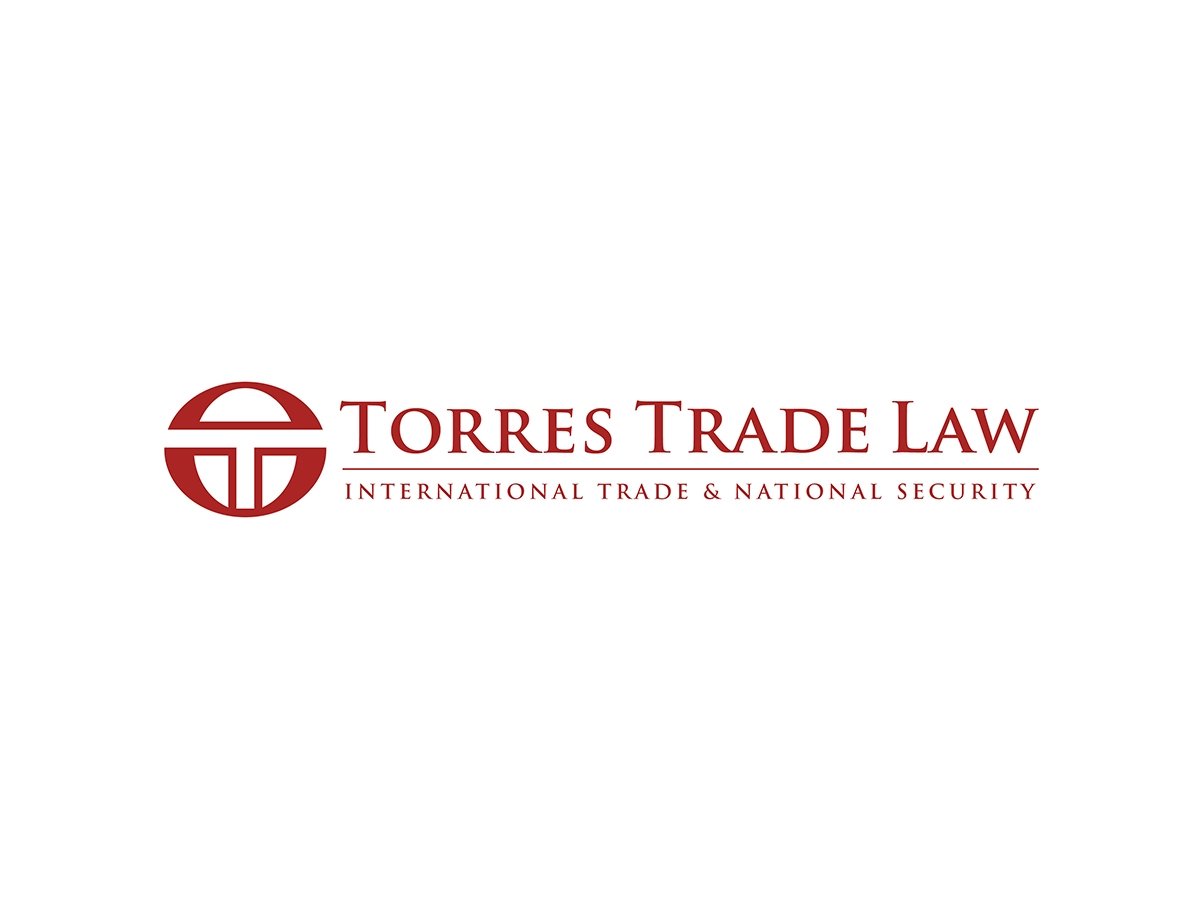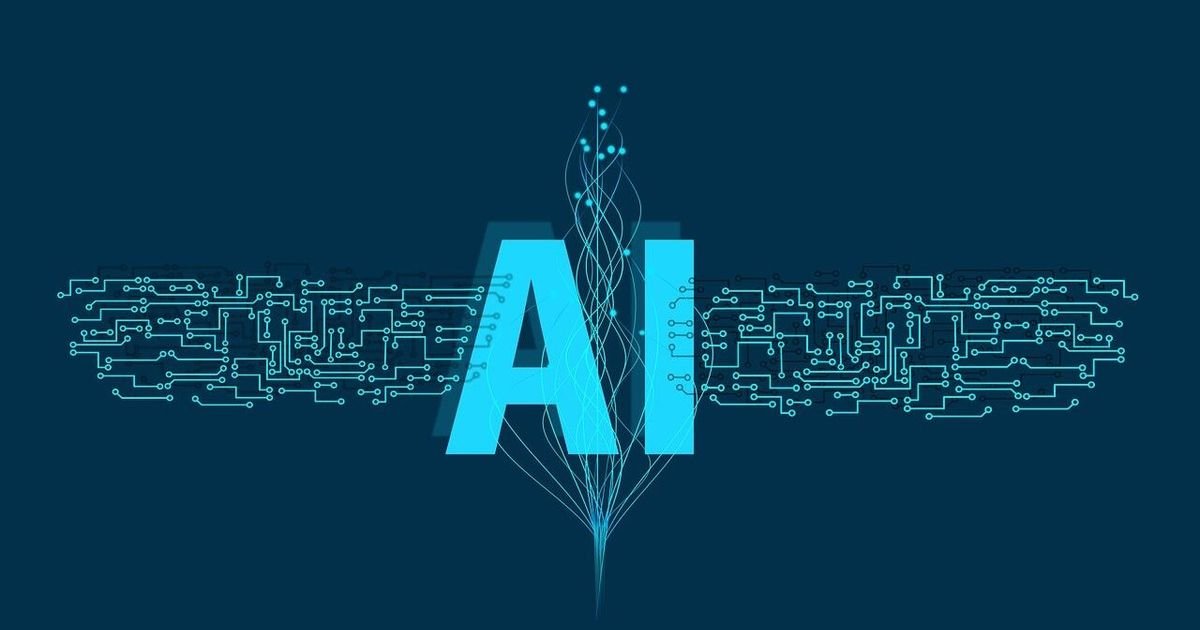Tools & Platforms
US seeks ‘unquestioned’ AI dominance

The United States government this week unveiled its Artificial Intelligence (AI) Action Plan, stating in no uncertain terms that the current administration of president Trump believes it is in a race to achieve unchallengeable and unquestionable worldwide dominance in the field.
Describing the AI-driven future as a potential ‘golden age of human flourishing’, Washington said that whichever country emerges with the largest AI ecosystem will reap the rewards of being able to set global standards, not to mention economic and military benefits.
Just as the US won the race to put man on the Moon, 56 years-ago this month, it said it was ‘imperative’ that America and her allies prevail again.
“A new frontier of scientific discovery lies before us, defined by transformative technologies such as artificial intelligence… Breakthroughs in these fields have the potential to reshape the global balance of power, spark entirely new industries, and revolutionise the way we live and work,” said the president in the report’s preamble.
“As our global competitors race to exploit these technologies, it is a national security imperative for the United States to achieve and maintain unquestioned and unchallenged global technological dominance. To secure our future, we must harness the full power of American innovation.”
The new plan centres on a three pillar strategy: to accelerate AI innovation, to build out US AI infrastructure, and to lead on international AI diplomacy and security.
Red tape
To support the first of these pillars, the US will seek to remove red tape that the government believes is holding back the private sector.
Trump has already made some moves in this regard, including rescinding a previous Executive Order (EO) issued by former president Biden in 2023 – which attempted to set standards for AI safety and security, protect privacy, and spur responsible development. The new administration believes Biden’s EO ‘foreshadowed an onerous regulatory regime’ and many of the actions laid out in the Plan this week reflect a general trend of unpicking Biden’s legacy.
It also sets out actions to encourage the use of open source and open weight AI models, enable adoption in critical sectors such as healthcare, empower initiatives to expand AI-enabled education and prepare the workforce for its impact, among other things.
On the second pillar, the AI Action Plan proposes a number of actions including streamlining the planning and building processes governing datacentre and chip fabrication factilities, as well as expanding and protecting the vast energy infrastructure that will be needed to run AI models.
On the third pillar, it sets out plans to export the full AI technology stack to other countries, lest they turn to rival states such as China. On China specifically, the Plan lays down initiatives to counter China’s influence on international governance bodies.
Also contained within the AI Action Plan are provisions for more AI-focused cyber initiatives including the potential creation of an AI-specific information and analysis centre (ISAC) within the Department of Homeland Security (DHS), and plans to do more to counter AI model vulnerabilities and fight back against malicious use of AI by threat actors.
No ‘woke’ AI in DC
Alongside the AI Action Plan and in keeping with its disavowment of diversity, equity and inclusion (DEI) initiatives, the Trump administration also launched a broadside against so-called ‘woke’ AI.
The text of an additional EO signed on 23 July by Trump says large language models (LLMs) should be neutral and nonpartisan tools “that do not manipulate responses in favour of ideological dogmas such as DEI”.
The EO says that in an AI context, this could mean targeting topics such as representation of ethnic or sexual minorities, critical race theory, discrimination on the basis of race or sex, intersectionality, transgender rights and unconscious bias.
The EO’s guidance applies to models used within the federal government but will likely have ramifications beyond it.
Broadly supportive
Matt Mitteldteadt, research fellow at Washington DC-based libertarian think tank the Cato Institute, was broadly supportive of the Action Plan’s aims.
“On the positive end, the order includes a much-needed emphasis on the importance of innovation, notably the forthcoming effort to analyse federal rules to identify onerous regulations. Also notable is the renewed emphasis on open source and related efforts to enable open source developers,” he said.
“The stated emphasis on AI diplomacy could be essential as America’s AI success depends on foreign market access. Finally, the elevated emphasis on cyber security -and specifically enabling cyber defence – is matched to the current state of risk.”
However, he pointed out some sticking points, notably the use of government procurement power to shape model output along ideological lines.
“Not only is ‘objectivity’ elusive philosophically, but efforts to technically contain perceived bias have yet to work,” said Mittelstaedt.
“This is also a mistake from a competitiveness standpoint. If this policy successfully shapes American models, we will lose international customers who won’t want models shaped by a foreign government’s whims.”
Tools & Platforms
U.S. Executive Order Propels American AI Exports | Torres Trade Law, PLLC

On July 23, 2025, President Trump signed an Executive Order, “Promoting the Export of the American AI Technology Stack” (AI Export EO), which represents a significant evolution in U.S. policy related to AI. For businesses operating in the AI sector and the wider emerging technology ecosystem, the move creates new export opportunities, but these opportunities come with export compliance considerations.
American AI Exports Program
The AI Export EO requires the establishment of the American AI Exports Program (the “Program”), which will be implemented by the Department of Commerce. The objective of the Program will be to support the development and deployment of “full-stack AI export packages.” These so-called “full-stack” exports encompass hardware, software, data infrastructure, AI models, and cybersecurity layers.
The AI Export EO requires coordination of relevant agencies for the “mobilization of Federal financing tools in support of priority AI export packages,” which are the export packages selected by Commerce for inclusion in the Program. Per the EO, the Trump administration also seeks to facilitate the investment in U.S. small businesses for the development of AI technologies and the manufacture of AI infrastructure, hardware, and systems.
Proposals for Inclusion in Program
Initially, Commerce will solicit public proposals from “industry-led consortia” to be included in the Program. The deadline for submission will be within 90 days after the call for proposals, and each proposal must include:
-
A “full-stack AI technology package,” inclusive of:
-
AI-optimized computer hardware (e.g., chips, servers, and accelerators), data center storage, cloud services, and networking;
-
data pipelines and labeling systems;
-
AI models and systems;
-
measures to ensure the security and cybersecurity of AI models and systems; and
-
AI applications for specific use cases (e.g., software engineering, education, healthcare, agriculture, or transportation);
-
-
A description of whether and to what extent the AI full-stack hardware is manufactured in the United States;
-
Identification of specific target countries or regions for export engagement;
-
A description of a business model explaining the entities that operate data centers and associated infrastructure; and
-
A description of requested Federal incentives and support.
Export Control Compliance Requirements
Importantly, the proposals for inclusion in the Program also require the consortia to “comply with all relevant United States export control regimes, outbound investment regulations, and end-user policies.” The AI Export EO also specifically references compliance with the Export Control Reform Act and guidance from the Department of Commerce Bureau of Industry and Security (BIS), which administers and enforces the Export Administration Regulations (EAR).
On May 13 2025, one day after announcing the recission of the Biden administration’s sweeping AI export rule, BIS published multiple guidance documents related to advanced computing integrated circuits useful for AI purposes:
-
Guidance on Application of General Prohibition 10 to People’s Republic of China Advanced-Computing Integrated Circuits: This guidance alerts U.S. industry to risks of using Chinese-origin advanced computing integrated circuits (ICs). General Prohibition 10 provides that one “may not sell, transfer, export, reexport, finance, order, buy, remove, conceal, store, use, loan, dispose of, transport, forward, or otherwise service, in whole or in part, any item subject to the EAR” with knowledge that a violation has occurred. Because many Chinese-origin advanced computing ICs, including specific Huawei Ascend chips, were likely developed or produced in violation of the EAR, the use of such chips is likely in violation of General Prohibition 10.
-
Industry Guidance to Prevent Diversion of Advanced Computing Integrated Circuits: With this guidance, BIS seeks to improve industry’s awareness of illegal diversion schemes specifically related to advanced computing ICs. Advanced computing ICs are used by China for military modernization and for training AI models. The guidance adds multiple new “transactional and behavioral red flags” to monitor and identifies numerous due diligence actions companies should take related to customers.
-
BIS Policy Statement on Controls that May Apply to Advanced Computing Integrated Circuits and Other Commodities Used to Train AI Models: Written as a “policy statement,” this document updates previous BIS advisory opinions and describes types of activities that may be subject to EAR export authorizations. Specifically, the policy statement announces that “BIS has determined that access to advanced computing integrated circuits and commodities subject to the EAR for training AI models has the potential to enable military-intelligence and weapons of mass destruction (WMD) end uses in Country Group D:5 countries (including China) or Macau.”
Companies and consortia interested in applying for inclusion in the Program must have an export compliance plan in place at both the proposal drafting and execution stages, and the compliance plan will require enhanced end-user screening and due diligence. Legal and compliance teams should proactively review their export control policies focused specifically on AI products, services, and data flows.
Tools & Platforms
Post-Labor Day reflection shows urgency, opportunity of AI :: WRAL.com

Labor Day was not just a break from
work. For me, it was a time to reflect on the values that brought my family to
this country — hard work, opportunity and community — and how we must pass
those values forward through innovation and inclusion.
Wake County stands at a crossroads.
Artificial intelligence is no longer a buzzword. It is a tool being used in
local government, healthcare, education and small business. What we do now will
shape whether this technology strengthens our communities — or leaves people
behind.
Morrisville: A model for smart innovation
Right here in Wake County, Morrisville
is showing what’s possible. Our town has been nationally recognized with the CIO 100 and IDC Smart Cities North America Awards
for smart city leadership. Earlier this year, an international delegation
visited our Town Hall to learn from CIO Rick Ralph’s team and our
approach to innovation.
We’re now deploying generative AI to
help staff search documents more efficiently. And we are planning to introduce Morris the Cricket, a generative AI
chatbot that improves customer service by answering resident questions in
real-time.
This kind of smart city innovation
should not remain isolated. We need a framework to share best practices across municipalities and scale what’s
working. Wake County is uniquely positioned to lead the nation in regional AI
implementation — and now is the time.
The AI moment is already here in
North Carolina
Across the state, AI is moving from
promise to practice:
•
NC State University is embedding AI into educational
curricula.
•
Atrium Health is using AI to improve early cancer
detection.
•
School systems are piloting AI to enhance student
safety.
And while large companies are
leading the way, only 5.1% of small businesses currently use AI.
That figure is expected to rise. But AI isn’t wiping out jobs. It’s
transforming them —and we need to prepare workers to take on new roles that
require digital fluency and AI literacy.
As former Cisco CEO John Chambers
put it: AI success will depend on
common-sense strategies and strong leadership.
Leadership matters: Meet the people moving
us forward
We’re fortunate to have leaders
right here in the Triangle who are building the infrastructure—physical,
digital, and educational—for an inclusive AI economy.
Mark Hinkle
– Founder, Peripety Labs
Mark is building bridges between AI
entrepreneurs, enterprise users, and educators. His focus on open source innovation and practical workforce development ensures
that AI adoption benefits everyone—not just those in tech hubs. His Artificially Intelligent Enterprise
newsletter and work through the All Things AI community have helped thousands of
professionals navigate the AI transition.
Tom
Snyder – Executive Director, RIoT
Tom’s work through RIoT is critical. He’s scaling the
innovation economy beyond Raleigh and Durham by accelerating startups and
advocating for rural inclusion. RIoT’s incubators and workforce training
programs are helping new businesses grow and helping workers prepare for AI,
IoT, and automation-driven jobs.
John
Holden – Smart Cities Manager, City of
Raleigh
John’s regional vision is essential.
Through efforts like the Connected
Triangle Summit (next on Oct. 14),
he’s helping municipalities work together, not in silos. Raleigh’s smart city
strategies—and Holden’s focus on university, government, and private sector
collaboration—serve as a blueprint for how AI can be scaled regionally.
🗓️
Learn more about the Connected Triangle Summit.
These leaders remind us: the path
forward isn’t top-down or bottom-up. It’s collaborative.
Training is the foundation of the AI
economy
Technology moves fast. Workforce
training needs to move faster. A few priorities:
1. Rapid Upskilling and Reskilling
Wake Tech and NC State
must continue expanding programs that meet workers where they are. That means stackable credentials, bootcamps, and micro-certifications that quickly turn skills into jobs.
2. Align Local Action with Statewide
Strategy
Governor Josh Stein’s Executive Order No. 24
created the AI Leadership Council,
backed by a new AI Accelerator
inside the Department of Information Technology. Wake County should align
closely with this council to ensure our programs directly connect to state
strategy—and our residents get first access to new jobs.
3. Cross-Sector Collaboration
Regional forums like the Connected Triangle Summit allow
employers, schools, and government to coordinate. These meetings help translate
policy into programs, and training into employment pipelines.
4. Build Ethical, Community-Centered
AI
AI adoption must be grounded in
trust. Data privacy, algorithmic fairness, and access to tools shouldn’t be
afterthoughts. Ethics needs to be built into every program, pilot, and
platform.
A personal reflection
This work is personal to me.
My daughter Sonia Rao, a
journalist at The New York Times, and
my son Rayan, studying biomedical engineering at NC State, remind me daily why
this matters. Their futures—and the futures of all North Carolinians —depend on the investments we make now.
As the child of immigrants, I know
what opportunity looks like. I’ve lived it. And I want to make sure every resident, regardless of background, has
access to the tools, training and mentors to succeed in this next era.
Looking ahead: A challenge for Wake
County and North Carolina
We don’t need to wait. We need to
act. Here’s where we begin:
•
Expand
workforce access to AI training across all ages and
experience levels—students, veterans, mid-career professionals, and public
sector workers.
•
Partner
with the Governor’s AI Council to integrate local and state
training systems.
•
Ensure
every AI pilot or program centers people. Not just efficiency, but equity, access, and upward mobility.
The future won’t be coded in silicon.
It will be built by people
Wake County’s future in AI won’t be
written in code. It will be built by our neighbors, our students, our educators
and our leaders.
Let’s make it smart. Let’s make it
inclusive. Let’s make it ours.
Tools & Platforms
AI Is Becoming Private Equity’s New Playbook

Private equity isn’t just experimenting with AI. From sourcing targets to assessing risks, the technology is moving into the core workflow.
getty
At one of the world’s biggest private equity firms, the pace of work has shifted from weeks to hours. Analysts who once spent long nights parsing financials and industry filings now run the same diligence in a fraction of the time with the help of generative AI. Inside Carlyle Group, the tools have become part of daily life, touching everything from research to credit assessments.
“Ninety percent of our employees use tools like ChatGPT, Perplexity and Copilot,” said Lucia Soares, Carlyle’s chief innovation officer, in an interview with Business Insider. The change, she explained, means credit investors can “assess a company in hours” instead of weeks. In an industry where speed and accuracy define competitive advantage, that’s more than an efficiency play — it’s a fundamental rewiring of how private equity (PE) operates.
And Carlyle isn’t alone. A Bain & Company survey of firms managing $3.2 trillion found that while only a minority have scaled generative AI across portfolios, nearly 20% already report measurable value from deployments. Looking ahead, 93% expect material gains within three to five years. In other words, AI is moving from pilot projects to strategy and becoming the newest entry in private equity’s playbook.
Data-Driven Deal Origination
Deal origination has always been a search for signal amid noise. AI is making that search sharper. For Gelila Zenebe Bekele, founder of Aone Partners, the change has been transformational.
“When sourcing proprietary deals that are not on the market, you either rely on deep industry connections, what we call ‘river guides’ in the search fund ecosystem, or you capture digital signals to identify readiness to transact,” Bekele told me. “Two years ago, some M&A workflows would take a week to complete. Today, an in-house AI system can do it in an afternoon.”
Her vantage point is distinctive. The search fund model — conceived at Stanford GSB in 1984 — was built lean, enabling faster adoption of new tools. That structure has since grown into a robust ecosystem and, by Stanford’s analysis, generated more than $10 billion in value for investors. For Bekele, the lean model creates space to embed AI directly into workflows instead of layering it onto legacy systems.
The market is also industrializing these capabilities. Startups are racing to build connective tissue between unstructured information and investment decisions. One example is Metal, which recently raised $5 million to create an “operating system” for private markets, promising to boost inbound deal flow by as much as 300% without additional headcount.
Rethinking Due Diligence
If sourcing is about finding the right door, diligence is deciding whether to walk through it. Here, Bekele has built AI directly into the process.
“Has there ever been a more opportune moment to modernize operations with technology? In just the past two years, models like GPT, Gemini, and Claude have evolved from simple chat interfaces into agentic systems capable of executing multi-step processes with minimal human oversight.” She added: “And this is only the early innings. By 2030, OpenAI projects AI agents could be tackling problems as complex as drug discovery. Across a wide set of work tasks, generative AI can cut average completion times by more than 60 percent. For technical work, the savings can reach 70 percent.”
At Aone Partners, she has trained AI agents on her standard workflows to generate AI exposure and diligence reports. “The first step is assessing whether the company’s core intellectual property is truly defensible — whether it constitutes a moat that an AI-native startup could not easily replicate.” The second is identifying how data and AI become levers for value creation, from product differentiation to workforce augmentation.
This lens resonates across the industry. Carlyle’s Soares described a structured rollout that trains employees from day one, creates an AI champions’ council and layers proprietary datasets into generative AI — “saving investors from sifting through endless materials.”
The Implementation Questions
Momentum doesn’t erase the risks. For private equity firms, ensuring data security is paramount. “Any AI strategy must be built to ensure that this information remains protected,” Bekele said. Beyond security, she sees a practical challenge many managers share. “It seems to me that every fund manager I speak with is asking the same question — do you build, buy, or partner?”
The pace of technological change complicates that decision. “The reason so many are ‘piloting’ AI for M&A tools is because what feels cutting-edge today may be obsolete in twelve months. The systems I used a year ago don’t compare to what I run today. To me, the answer is building a workflow around the needs of the fund manager that can move in lockstep with the best large language models. If it can be built in-house, fantastic. If it’s a product, the question is whether it can evolve as quickly as the large LLMs themselves.”
Another constraint borders on data quality. PE analysis is nuanced, and generic models won’t suffice. Bain’s research notes that firms making progress are the ones putting in organizational support — standing up governance, prioritizing use cases and spreading learnings across portfolios — rather than experimenting in silos.
What Comes Next
The mood in the industry has changed from curiosity to strategy. Nearly two-thirds of private equity firms now consider AI implementation a top strategic priority, according to Private Equity International’s Advanced Technologies & AI Report.
For Bekele, the reason is simple. “The M&A workflow generates massive volumes of data each day—financial statements, contracts, CRM records, customer reviews and interview transcripts. AI expands the aperture, processing information at speed so investors can focus on what matters: generating insight and making decisions.”
That captures the wager many investors are making: Not that AI will replace human judgment, but that it will elevate it. And it could be the silent revolution happening in an industry known for its strict rules. The firms turning AI into processes, not just projects, will likely compound advantages across sourcing, diligence and portfolio operations. Given how quickly the toolset is evolving, the edge may belong to managers — large or lean — who are open to change and learn in public.
-

 Business2 weeks ago
Business2 weeks agoThe Guardian view on Trump and the Fed: independence is no substitute for accountability | Editorial
-
Tools & Platforms4 weeks ago
Building Trust in Military AI Starts with Opening the Black Box – War on the Rocks
-

 Ethics & Policy1 month ago
Ethics & Policy1 month agoSDAIA Supports Saudi Arabia’s Leadership in Shaping Global AI Ethics, Policy, and Research – وكالة الأنباء السعودية
-

 Events & Conferences4 months ago
Events & Conferences4 months agoJourney to 1000 models: Scaling Instagram’s recommendation system
-

 Jobs & Careers2 months ago
Jobs & Careers2 months agoMumbai-based Perplexity Alternative Has 60k+ Users Without Funding
-

 Education2 months ago
Education2 months agoVEX Robotics launches AI-powered classroom robotics system
-

 Podcasts & Talks2 months ago
Podcasts & Talks2 months agoHappy 4th of July! 🎆 Made with Veo 3 in Gemini
-

 Education2 months ago
Education2 months agoMacron says UK and France have duty to tackle illegal migration ‘with humanity, solidarity and firmness’ – UK politics live | Politics
-

 Funding & Business2 months ago
Funding & Business2 months agoKayak and Expedia race to build AI travel agents that turn social posts into itineraries
-

 Podcasts & Talks2 months ago
Podcasts & Talks2 months agoOpenAI 🤝 @teamganassi

